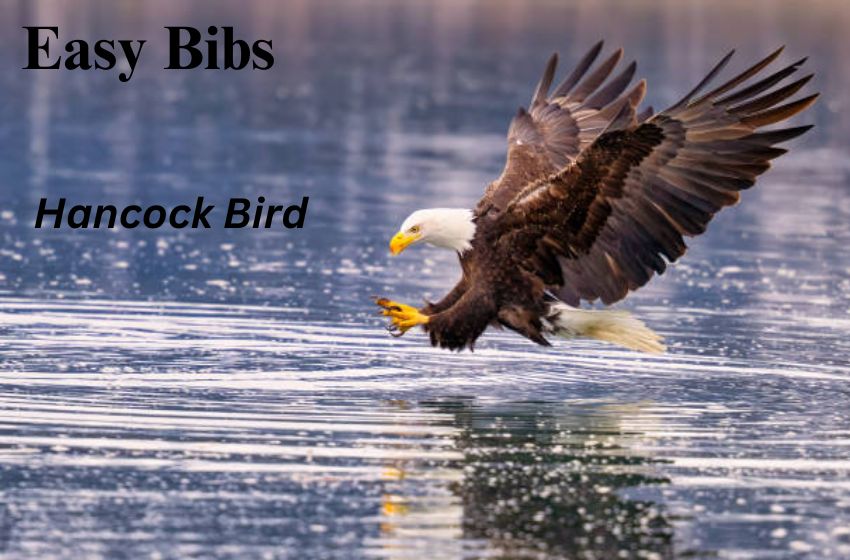The term “Hancock Bird” evokes imagery of a colorful and enchanting avian creature. Although not scientifically recognized, this fictional bird has captured the imagination of many through literature, art, and folklore. The Hancock Bird symbolizes the human fascination with nature and the power of the imagination to create fantastical beings. This article explores the various dimensions of the Hancock Bird, from its symbolic significance to its portrayal in popular culture.
Symbolism and Cultural Significance
Mystical Representation
The Hancock Bird is often depicted as a mystical creature, adorned with vibrant plumage and endowed with melodious songs. It embodies themes of beauty, wisdom, transformation, and renewal. In many cultures, birds are seen as messengers between the earthly and the spiritual realms. The Hancock Bird, with its enchanting appearance, symbolizes this connection, representing the human yearning for transcendence and enlightenment.
Spiritual Totem
For many, the Hancock Bird transcends its fictional origins, taking on a role as a spiritual totem or guide. It is seen as a messenger carrying profound personal and spiritual significance. This connection is further deepened through personal anecdotes and stories where the Hancock Bird has been a symbol of hope, transformation, or enlightenment. These stories underscore the deep, sometimes mystical connection humans have with the natural world, with the Hancock Bird serving as a bridge between the tangible and the spiritual.
Creative Depictions and Artistic Inspiration
Literature and Art
The Hancock Bird has been a muse in creative works, inspiring artists and writers to depict it with bright, iridescent feathers and elaborate patterns. Imaginative depictions often place the Hancock Bird in lush, dense forests, adding to its enchanting and otherworldly aura. These creative representations highlight the bird’s vibrant plumage, intricate courtship displays, and agile movements, capturing the beauty and wonder of nature.
Popular Culture
In popular culture, the Hancock Bird has made significant impacts. It appears in media and entertainment, from animated films to literature, captivating audiences with its mystical allure. In fashion and design, the Hancock Bird has influenced trends, with its imagery inspiring everything from haute couture to everyday apparel and home décor. The bird’s rich symbolism resonates with themes of freedom, beauty, and the mystical connection between humans and nature.
Fictional and Imaginative Characteristics
Physical Attributes
As a fictional concept, the Hancock Bird’s physical characteristics are open to interpretation. Authors and artists often describe it with brightly colored plumage, elaborate patterns, and perhaps unique physical adaptations for survival in its imagined habitat. Imaginative descriptions paint the Hancock Bird as a creature adorned with iridescent feathers, endowed with graceful flight and striking features that blend fantasy and natural beauty.
Behavioral Traits
In imaginative narratives, the Hancock Bird is depicted with various behavioral traits and social structures. These birds are portrayed as highly social creatures, engaging in intricate courtship displays, melodious singing, and cooperative nesting. Their behavior mirrors that of real birds, including foraging for food, caring for offspring, and defending territories. These fictional behaviors add to the allure of the Hancock Bird, making it a symbol of avian beauty and social complexity.
Conservation Symbolism and Environmental Awareness
Conservation Symbol
Although the Hancock Bird is fictional, it serves as a powerful symbol for conservation efforts. It reflects the broader narrative of environmental awareness, emphasizing the need to protect wildlife habitats and foster biodiversity. The Hancock Bird’s portrayal in conservation contexts underscores the delicate interplay between human activity and wildlife preservation, urging a collective effort to ensure the survival and continuity of all species.
Educational and Inspirational Role
The Hancock Bird also plays an educational and inspirational role. By engaging with this fictional bird, people can explore the importance of conserving real-life habitats for wildlife. Educational programs and storytelling centered around the Hancock Bird can inspire curiosity and appreciation for the diversity of bird life in the world. This imaginative approach to conservation helps foster a deeper connection with nature and promotes ecological stewardship.
Adaptability and Resilience
Ecological Role
The Hancock Bird’s fictional adaptability to different environments showcases its resilience as a species. In imaginative depictions, these birds inhabit various habitats, from dense forests to open fields, demonstrating their ability to thrive in diverse conditions. This portrayal highlights the importance of adaptability in the face of environmental challenges, reinforcing the need for conservation efforts to protect habitats and ensure the survival of resilient species.
Survival Strategies
Imaginative descriptions often portray the Hancock Bird employing clever survival strategies, such as using tools or cooperative hunting techniques. These fictional behaviors emphasize the bird’s intelligence and resourcefulness, traits that resonate with real-world conservation themes. By exploring these imaginative survival strategies, people can gain a greater appreciation for the complexity and resilience of avian life.
Conclusion
The Hancock Bird, though fictional, captivates the imagination and serves as a powerful symbol of beauty, wisdom, and environmental awareness. Through its rich cultural symbolism and creative depictions, it inspires curiosity and appreciation for the natural world. By engaging with the Hancock Bird, people can explore the wonders of nature and the importance of conserving real-life habitats for wildlife. The Hancock Bird reminds us of the magic that lies in our ability to dream and create fantastical tales, capturing the beauty and wonder of the world around us.
Incorporating the Hancock Bird into educational and conservation efforts can help foster a deeper connection with nature and promote ecological stewardship. As we continue to face environmental challenges, the symbolic significance of the Hancock Bird can serve as a reminder of the urgent need to protect our natural world for future generations to admire and appreciate.
“Easy Bibs” will continue to explore and share the enchanting world of the Hancock Bird, inspiring readers to connect with nature and support conservation efforts. Through stories and creative works, we can all contribute to a greater understanding and appreciation of the beauty and complexity of avian life.


